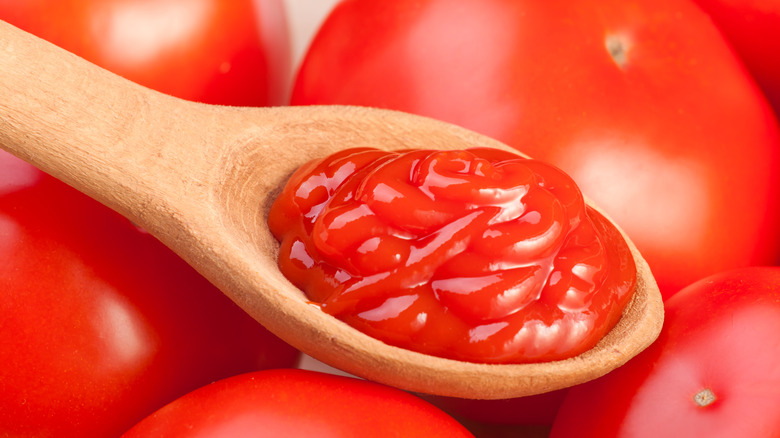Is There A Difference Between Ketchup And Catsup?
Unless you've been living under a rock, you've definitely heard of ketchup. It's one of the most popular condiments out there, with people using it for countless purposes: dipping fries, drizzling over hot dogs, and so on. But, you may not have heard of catsup, which certainly sounds quite similar to ketchup, but are they literally the same thing?
Most sources state that ketchup and catsup are the exact same thing, just different variations of the spelling. Ketchup is, of course, the most common spelling and has long been associated with the condiment. Meanwhile, catsup is an alternative spelling that was popular in certain regions of the United States for some time during the 19th century. Nowadays, ketchup is considered the primary spelling — although the FDA does recognize the spelling of "catsup" (as well as "catchup") as the same thing as "ketchup."
However, there are some sources out there that claim catsup had a slightly different recipe at one point in time. Some recipes for catsup included ingredients like walnuts, mushrooms, and anchovies. Those who claim the two were different also suggest that catsup had a thinner consistency than ketchup. While some types of catsup may have contained other ingredients, it seems like it was the variation referred to as "tomato catsup" that became synonymous with ketchup, with the latter term eventually becoming the predominant name for the product.
The history of ketchup
The ketchup we know today evolved from either Chinese ke-chiap or Indonesian kicap condiments containing either shellfish or pickled fish along with herbs and spices. European traders came across these condiments while visiting Asia during the 17th century. Around 1690, the name evolved to "catchup" and, by 1711, it evolved further to "ketchup."
As for the spelling of "catsup," you can thank prominent poet Jonathan Swift for immortalizing the new spelling in his 1730 poem, "A Panegyric Of The Dean In The Person Of A Lady In The North." Interestingly, despite having three ways to spell it at this point, ketchup didn't actually contain tomatoes yet — which is the defining characteristic of the condiment we know today. Instead, a typical recipe called for ingredients such as vinegar, white wine, anchovies, shallots, and a few other variable additions.
According to Mental Floss, tomatoes were first used for ketchup by farmers in the early 19th century in the U.S. The H.J. Heinz Company started producing their version of ketchup (and spelling it as "ketchup") in 1876. Heinz wasn't the first company to do so, but it certainly won the long game, as ketchup is still associated with it today. The popularity of Heinz's ketchup even led to competitor brands, such as Del Monte and Hunt's, adapting their own spelling from "catsup" to "ketchup."

